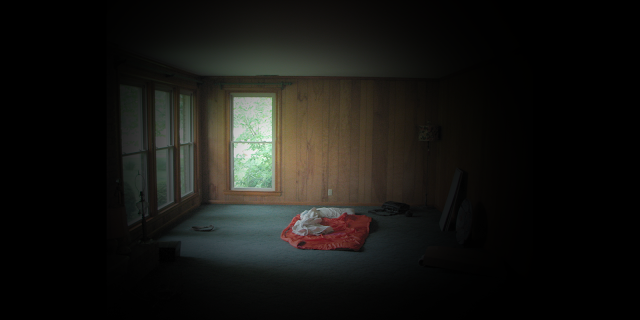The title of this post is just a guess. Let's talk about some interesting entoptic (or maybe just optic) phenomena.
First is something that I've noticed before, in the same context that I'm going to describe here, but also during our winter trip to China in late 2011, lying in bed one morning and watch the sunrise through the curtains, with my eyes full of sleep.
I'm standing at Fenway Station, waiting for the train to come and take me home. I'm soaking wet because its pouring rain and I didn't take an umbrella. My glasses are specked with water droplets. The sun has set.
I find that I can attend to the fine structure of the images projected on my retina (I'm doing this one eye at a time) through the water droplets. This is a little strange, since the droplets are just a couple of centimeters in front of my eyes, so it should be impossible for me to focus on them and to resolve such fine details, but I'm doing it anyways.
The droplet images - for the most part circular, disk-shaped - look like something between an amoeba and an image of the sun. The amoeba-ness is from their speckled, squirmy, internal structure, like a bag of little bits and pieces. The details are fine, near my acuity limit. The sun-ness is from their perimeter, which has a rim that stretches outward, like the corona of the sun in eclipse. I will draw a picture and put it here, since I can't find anything like it on the internet.
These things I've noticed before. My theory is that the droplets are acting as little lenses, focusing an image near my pupil, which is then - in a sort of accidental Maxwellian view - getting perfectly focused on my retina. The structure I'm seeing is the texture of the interface between the water and the surface of my glasses, little bits of dust and et cetera. It's like seeing a water droplet through a microscope, which adds (through psychological association perhaps) to the impression of seeing an organism. The rim is the edge of the droplet, the meniscus, and the corona is the stretching of the edge due to surface tension.
All that is just a guess! Nobody I talk to seems to have a good explanation, but that seems as good as any.
The next part I had not seen before.
I found that in my left eye, but not in my right, when I blinked, I saw bright specks, pin points of light, against the background of the droplets. I couldn't see the specks outside of the droplets.
When I attended more closely, I discovered extremely fine structure to the points of light. Basically, they looked like this:
I really don't know what these things were. I have forgotten a crucial detail: did they move when my eye moved? I feel that I could look from one to the other, but I don't remember if this is really how it was, or if it's just how it seemed. If that's how it was, they can't have been on the surface of the eye, and it's hard to explain why I only saw them in the left. At the time, it made sense to me that they were on my cornea, specks of dust, so I think they must have been fixed to my point of view. They slowly faded and became less distinct, and I would occasionally blink to restore them.
So, weirdness at Fenway.



